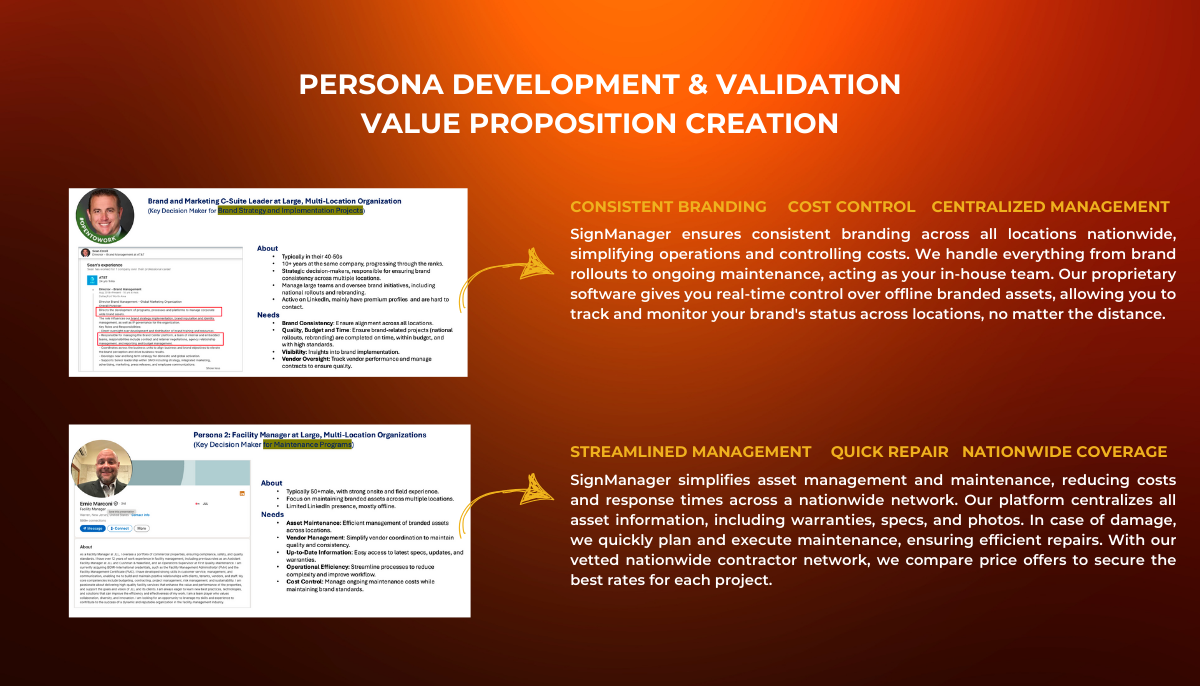
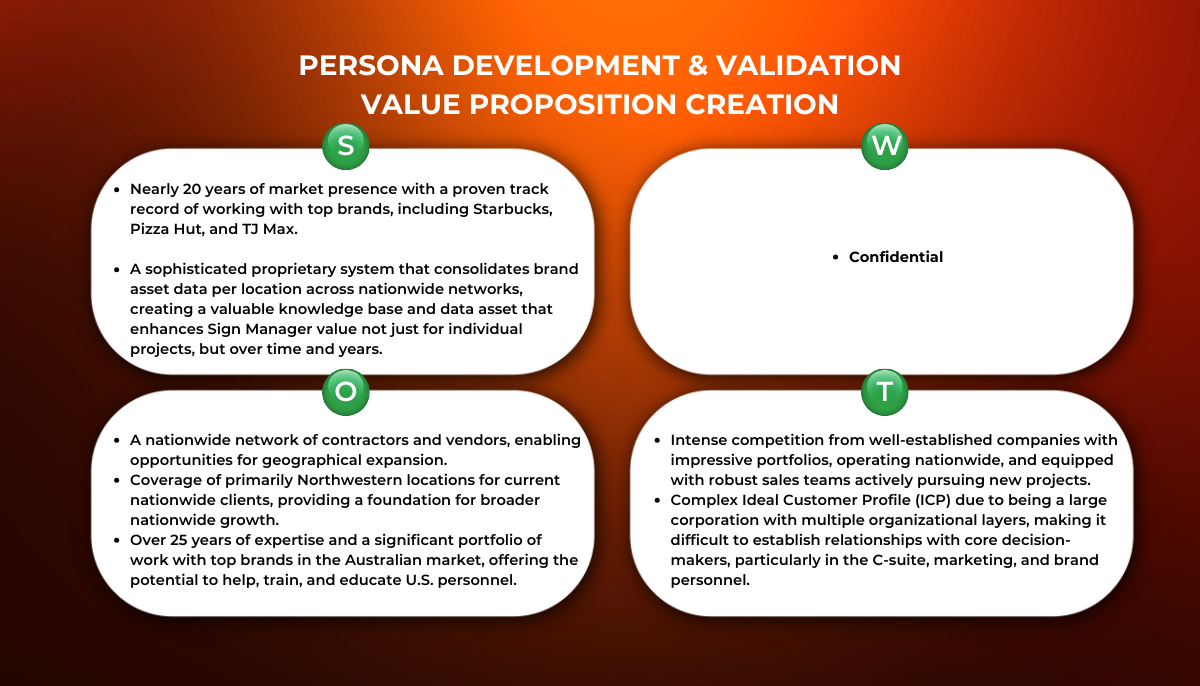
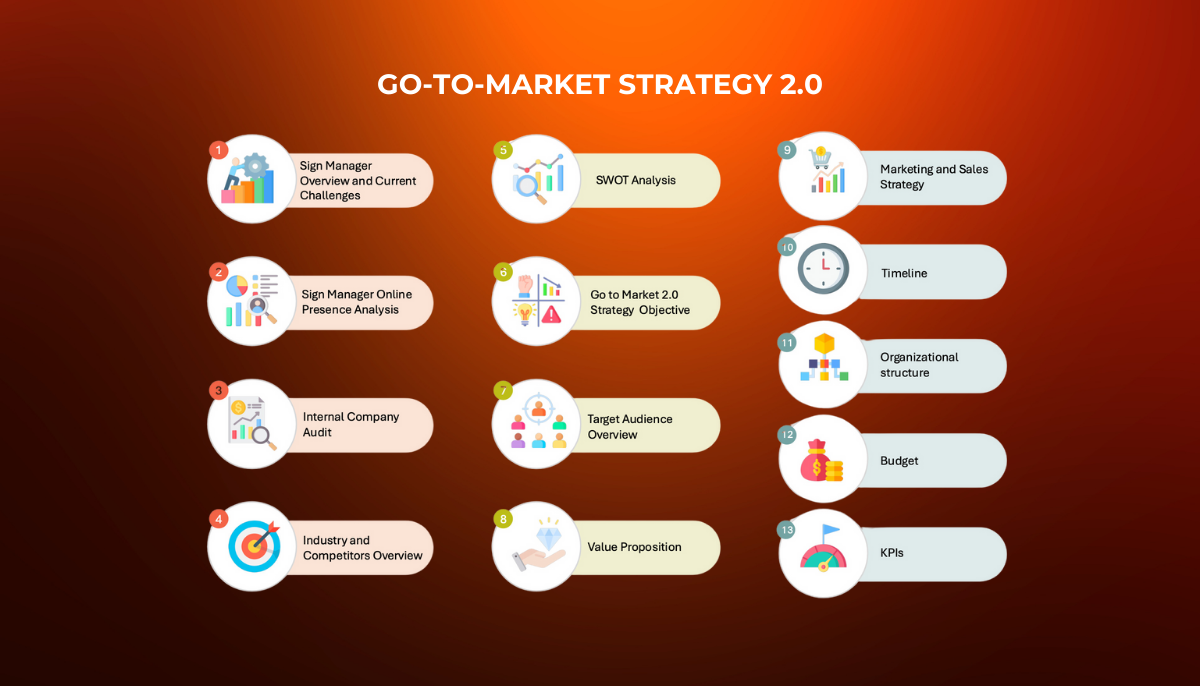
Rebranding and repositioning a sign management company
Sign Manager is a leading Australian sign management company that expanded into the US market nearly 20 years ago. Specializing in strategy and consulting, brand implementation, and brand maintenance, Sign Manager helps branded corporations manage their presence across hundreds of physical locations. With clients like Adidas, Hertz, Starbucks, Volkswagen, Europcar, and Australia Post in Australia, Sign Manager consistently delivers exceptional results that demonstrate its expertise and commitment to excellence.
- Company SaaS start-up
- Stage Growth
- Industry Marketing Tech
- Services Fractional CMO
Challenge: Despite being in the U.S. market for 20 years, Sign Manager’s market presence remains limited, with only one service actively sold from its extensive portfolio. As a result, the company was often perceived more as a maintenance provider than a strategic partner in branded asset management and brand implementation. While Sign Manager has served well-known brands like Starbucks, Pizza Hut, LA Fitness, and TJ Maxx, its customer acquisition has primarily relied on personal relationships and referrals. Though effective in the short term, this approach has hindered the development of a scalable business development and sales process.
To support the company’s repositioning and business growth, three key initiatives were undertaken:
Market Research, competitor analysis
Conducted market, competitor, and consumer insights research to identify opportunities for the new positioning.
Business Analysis
Analyzed current business operations, organizational structure, processes, and performance analytics.
Go-to-Market Strategy 2.0
Developed a comprehensive Go-to-Market 2.0 strategy to reposition the company and drive business growth.
What was done:
- Market and Industry Analysis
- The last market analysis had been conducted in 2007, so the company needed to understand the current market landscape, competitors, marketing trends, and consumer insights.
- Seven competitors were analyzed in detail, including their acquisition strategies, software tools, positioning, and messaging strategies.
- Overall market opportunities were assessed to identify areas for growth.
2. Consumer Insights Collection, Persona Development
- Interviews were conducted with current and former employees of target audience companies to understand their internal decision-making processes and procurement workflows.
- Using real research data, we developed buyer personas along with tailored value propositions and messaging for each.
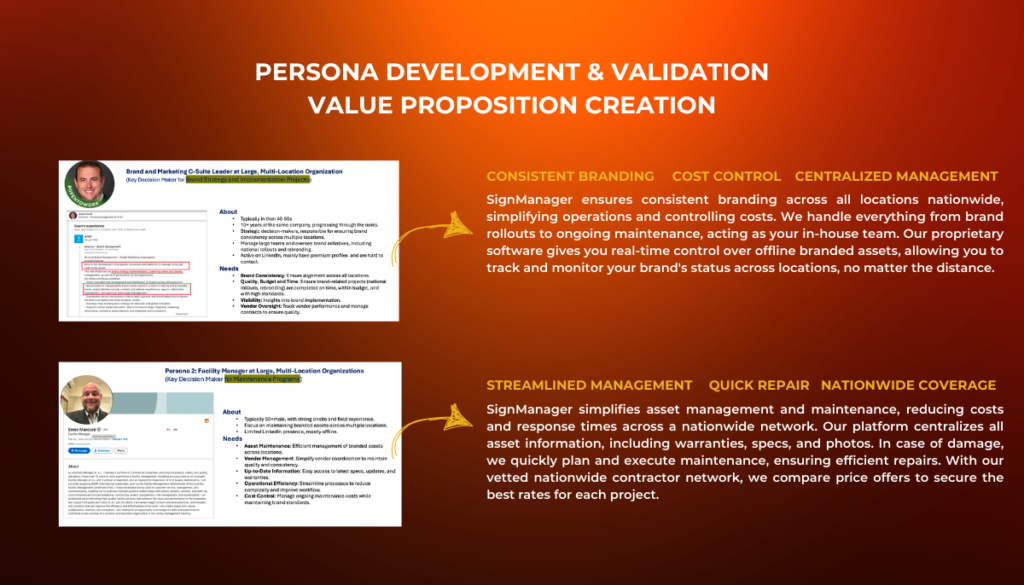
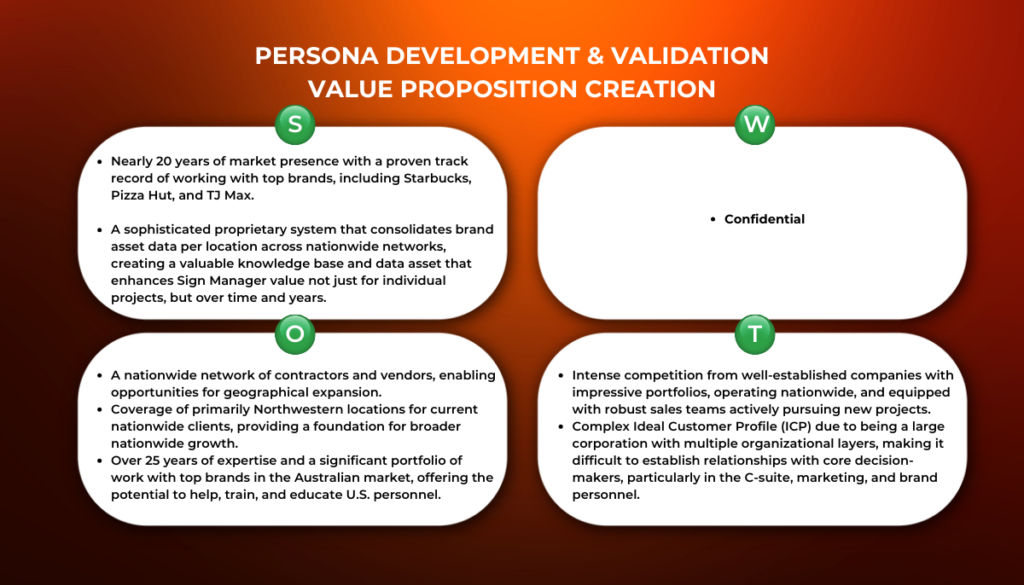
3. Internal Audit
- Both the Australian and U.S. offices were audited to evaluate internal culture, processes, organizational structure, team roles and responsibilities, and the motivation and evaluation systems.
- Communication between the two offices was assessed.
- The suitability of current team members for their roles was evaluated.
- Key gaps and challenges were identified.
4. Leadership Alignment
- Interviews and brainstorming sessions were conducted with the leadership team to align visions and goals for the U.S. market.
5. Go-to-Market 2.0 Strategy Development
- A comprehensive Go-to-Market 2.0 strategy was developed, outlining:
- The company’s repositioning and new messaging
- Unique selling propositions (USPs)
- Service offerings
- New team structure
- Marketing and sales strategy
- Implementation timeline
- Key performance indicators (KPIs)
- Budget allocation
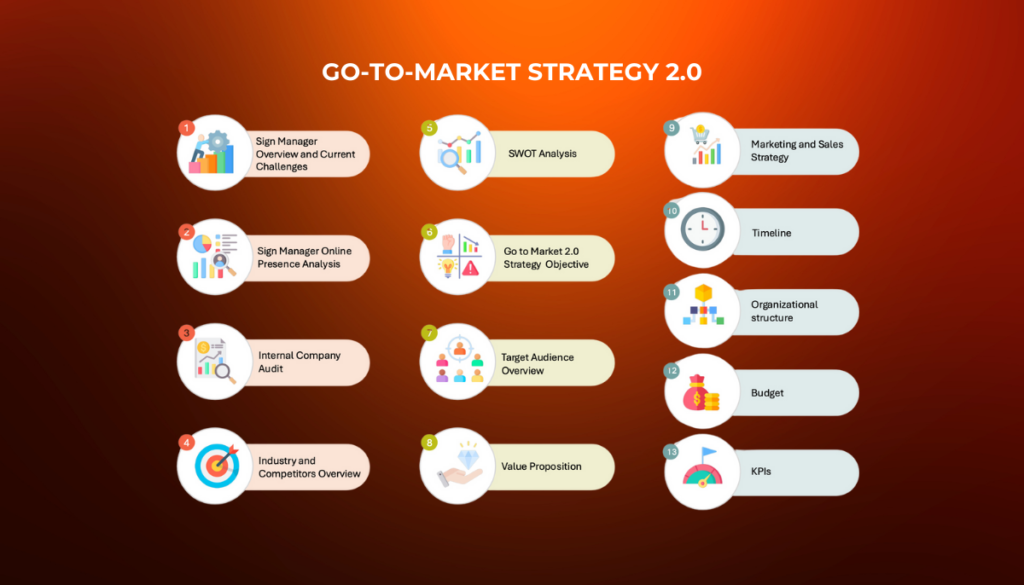
Impact and next steps
The strategy was presented to top management and approved for execution. I continued supporting the company in a consulting role to ensure that the strategy was implemented effectively and that the company met its goals. As a first step, we began with a rebranding process in collaboration with a marketing agency that helped create a new brand identity, define core values, and effectively communicate the new culture to the internal team.
